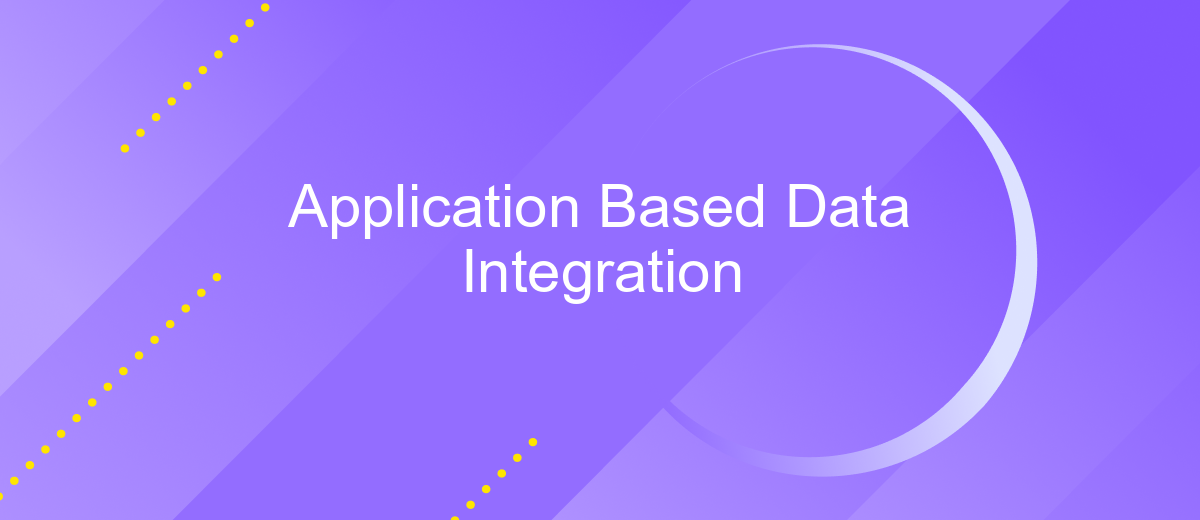Application Based Data Integration
In today's data-driven world, the seamless integration of diverse data sources is crucial for informed decision-making and operational efficiency. Application Based Data Integration (ABDI) offers a robust solution by enabling the synchronization and consolidation of data across various applications. This article explores the principles, benefits, and practical implementations of ABDI, highlighting its significance in enhancing data accessibility and reliability for businesses.
Introduction
In the contemporary digital landscape, the integration of data from disparate applications has become a crucial task for organizations aiming to leverage their information assets effectively. Application Based Data Integration (ABDI) addresses the challenge of unifying data from various sources, enabling seamless access and analysis. This approach not only enhances data consistency but also promotes operational efficiency and informed decision-making.
- Improved data accuracy and consistency across platforms
- Streamlined business processes and workflows
- Enhanced ability to derive insights from integrated data
- Reduction in data silos and redundancy
- Facilitation of real-time data access and updates
As organizations continue to adopt diverse applications to meet their evolving needs, the importance of ABDI cannot be overstated. By effectively integrating data from multiple sources, businesses can achieve a holistic view of their operations, drive innovation, and maintain a competitive edge in the market. The following sections will delve deeper into the methodologies, benefits, and challenges associated with ABDI.
Definition and Scope

Application Based Data Integration refers to the process of combining data from different sources into a single, unified view through the use of software applications. This type of integration enables organizations to streamline their data management processes, ensuring that data from various systems can be accessed and utilized efficiently. By leveraging application-based solutions, businesses can achieve real-time data synchronization, improved data accuracy, and enhanced decision-making capabilities.
The scope of Application Based Data Integration encompasses a wide range of tools and services designed to facilitate seamless data connectivity. For instance, platforms like ApiX-Drive offer robust integration capabilities, allowing users to automate workflows and synchronize data across multiple applications without the need for extensive coding knowledge. By utilizing such services, organizations can reduce manual data entry, minimize errors, and ensure that their data ecosystem remains cohesive and up-to-date.
Benefits and Challenges

Application Based Data Integration (ABDI) offers numerous advantages for businesses seeking to streamline their data management processes. By leveraging specialized applications, organizations can achieve more efficient data consolidation, improved data quality, and enhanced decision-making capabilities. Additionally, ABDI can lead to cost savings by reducing the need for manual data entry and minimizing errors.
- Efficiency: ABDI automates data integration, reducing time and effort.
- Accuracy: Enhanced data quality through consistent data handling.
- Cost Savings: Lower operational costs by minimizing manual interventions.
- Scalability: Easily scalable to accommodate growing data volumes.
- Real-Time Insights: Provides timely data for better decision-making.
Despite its benefits, ABDI also presents several challenges. Integrating diverse applications can be complex and may require significant initial investment in technology and training. Data security and privacy concerns are paramount, as sensitive information is often shared across multiple platforms. Moreover, ensuring compatibility between different systems and maintaining data integrity over time can be daunting tasks. Therefore, a well-planned strategy and ongoing management are essential for successful ABDI implementation.
Types and Tools

Application-based data integration involves the use of specialized software to combine data from different sources into a unified view. This approach is essential for businesses that need to aggregate data from various applications to gain comprehensive insights and make informed decisions. The tools used in this method vary in complexity and functionality, catering to different integration needs.
There are several types of application-based data integration tools, each designed to address specific challenges. These tools can be broadly categorized based on their functionality and the integration approach they employ. Understanding the different types can help organizations choose the right tool for their specific requirements.
- ETL Tools: Extract, Transform, Load tools are used to extract data from different sources, transform it into a suitable format, and load it into a target database.
- API Management Tools: These tools facilitate the integration of data through APIs, allowing different applications to communicate and share data seamlessly.
- Data Virtualization Tools: These tools provide a virtual view of data from multiple sources without the need to move it, enabling real-time access and analysis.
Choosing the right application-based data integration tool depends on various factors such as the complexity of data sources, the volume of data, and specific business requirements. Proper evaluation and selection can significantly enhance data integration efficiency and effectiveness.
- Automate the work of an online store or landing
- Empower through integration
- Don't spend money on programmers and integrators
- Save time by automating routine tasks
Conclusion
In conclusion, application-based data integration is a crucial aspect of modern data management, enabling seamless communication between diverse systems and applications. By leveraging advanced integration tools and platforms, organizations can ensure the accuracy, consistency, and accessibility of their data across various channels. This approach not only enhances operational efficiency but also supports informed decision-making by providing a unified view of critical information.
Services like ApiX-Drive play a pivotal role in simplifying the integration process, offering user-friendly solutions that require minimal technical expertise. By automating data flows and synchronizing information between applications, ApiX-Drive helps businesses save time and reduce the risk of errors. As organizations continue to adopt more complex and interconnected systems, the importance of reliable and efficient data integration solutions will only grow, underscoring the need for tools that can adapt to evolving technological landscapes.
FAQ
What is Application Based Data Integration?
Why is Application Based Data Integration important?
What are the common challenges in Application Based Data Integration?
How can I automate Application Based Data Integration?
What are the benefits of using a service like ApiX-Drive for data integration?
Do you want to achieve your goals in business, career and life faster and better? Do it with ApiX-Drive – a tool that will remove a significant part of the routine from workflows and free up additional time to achieve your goals. Test the capabilities of Apix-Drive for free – see for yourself the effectiveness of the tool.


